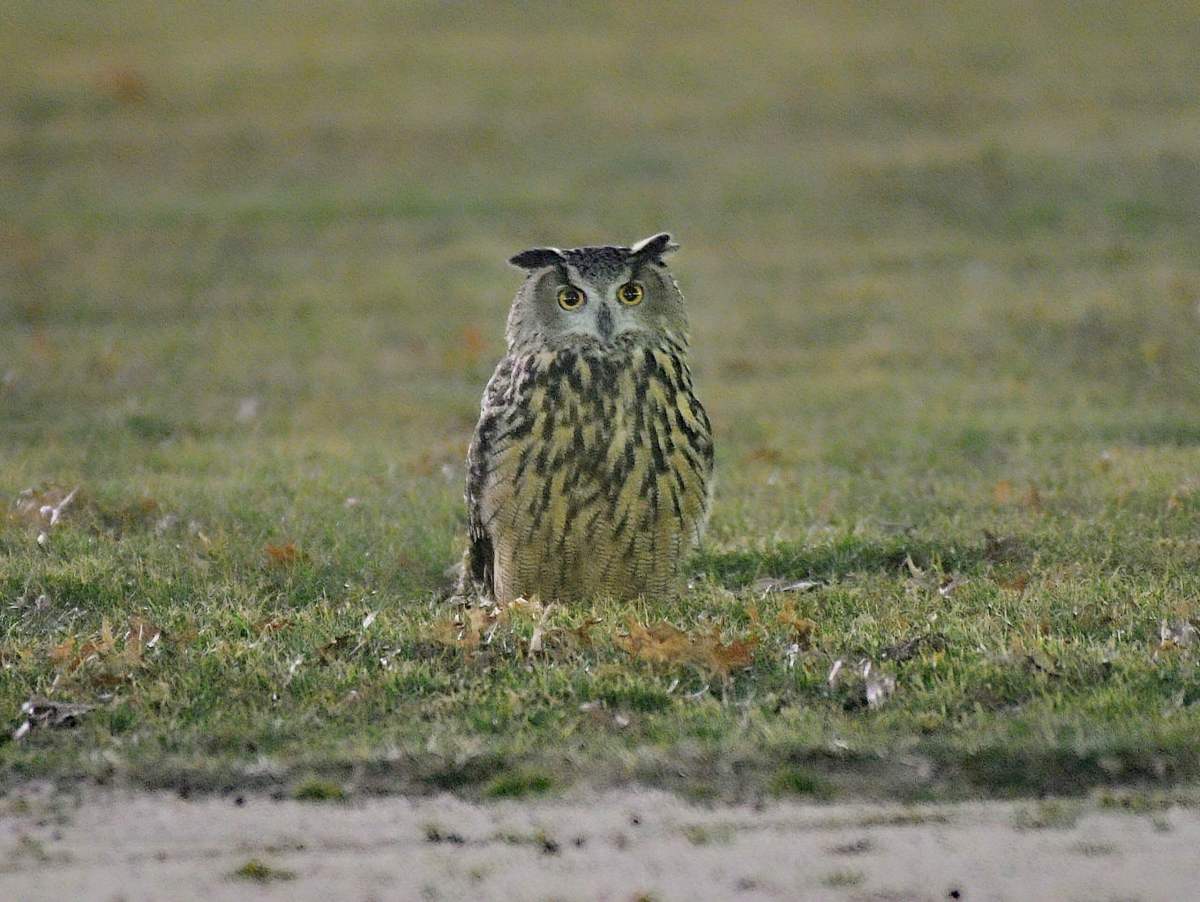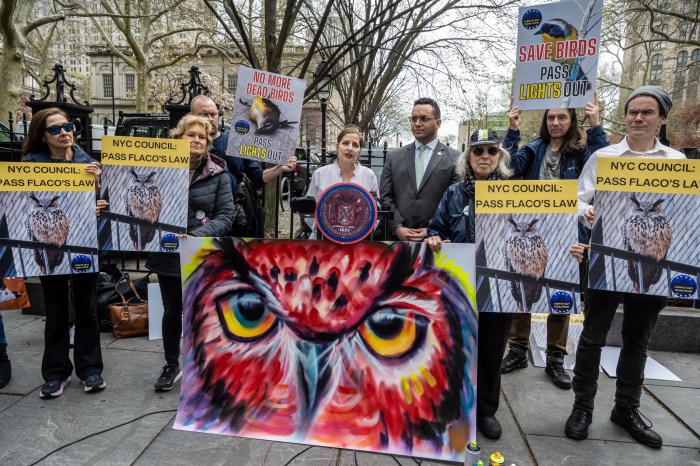Flaco, the Eurasian Eagle-Owl who escaped his zoo habitat following a vandalism incident, has shown no signs he intends to return home, and in fact, seems to be adjusting to life in the “wild” of Central Park.
The superb owl, with his piercing orange eyes, has become the latest winged celebrity to grace Central Park, drawing throngs of onlookers desperate for a glance at the majestic bird each day. Despite the best efforts of staff at the Central Park Zoo, Flaco continues to evade capture, instead spending his days perched high up in the park’s trees and reveling in his fame.
Flaco first escaped from his habitat on Thursday night, when the steel mesh netting around his enclosure was cut open by a vandal who still has not been caught. Early in his adventure, the owl was seen as far away as Madison Avenue before apparently returning to the park for good, where he took up his perch.
Zoo officials, and fans, have closely monitored Flaco’s movements since his escape, with many worried the long-captive owl, accustomed to being fed all his life, might starve before learning how to hunt. Flaco has evaded capture numerous times; zookeepers came closest to retrieving him on Thursday, Feb. 9, when he came within inches of a trap centered on a delicious rat, surrounded by a cage covered in wire. Flaco tried to grab the rat but escaped before he could be caught.

But to the relief of birders everywhere, Flaco appears to be adjusting to life outside his enclosure: the Manhattan Bird Alert Twitter account, which has been tracking the owl’s movements, reported Saturday that Flaco appears to have learned how to hunt for prey and feed himself all by his lonesome, crucial to his survival outside the zoo if keepers are unable to capture him.
“We are relieved and overjoyed that Flaco the Eurasian Eagle-Owl, who had spent his entire roughly 13-year life in captivity, has learned to obtain prey and feed himself after a week in the wild of Central Park,” the account tweeted on Saturday,
David Barrett, the Upper East Side investor who runs Manhattan Bird Alert, told amNewYork Metro that Flaco has become a “worldwide sensation” and suspects his example might inspire people permanently to the birding cause.
“Flaco is popular with a lot of people, a wide range of people,” said Barrett. “People come out, children come out, and they’re looking at Flaco and asking about Flaco. Everyone, all New Yorkers can come out. He’s big, a big owl, so unlike some birds that are small and tough to see, you don’t absolutely need binoculars to see Flaco.”
Since owls are nocturnal, Flaco mostly stays put during the day, when most onlookers show up, giving people a great view of the owl as he slumbers. And having lived in a zoo all his life, he seems unbothered by the crowds of admirers, finding more objection with the birds who get in his way, said Barrett.

“The people don’t bother him, the birds do. That’s how it is for owls,” said Barrett, noting he’s fended off challenges of dominance posed by red-tailed hawks. “Other birds don’t like owls, owls are predators.”
Should zookeepers fail to capture him, it’s unclear what impact Flaco’s continued presence could have on the park’s ecosystem. Flaco belongs to one of the largest species of owl, with wingspans of up to 6 feet, but other large, wild owls have made Central Park their home in recent years, including at least two Great Horned Owls and a Barred Owl, the latter nicknamed Barry.
“He’s one bird, it’s a massive 843-acre park,” said Barrett. “He’s small, though, in the grand scheme of the park. We have red-tailed hawks flying in every day and dropping by, and they fulfill the same role. They mostly eat rodents, squirrels and rats, so one more owl doing that, no big deal.”
In a statement, a Parks Department rep said that it’s still in Flaco’s and the park’s interest to bring him home. Being able to feed himself is not the only survival skill necessary for the wild, said Richard Simon, the director of the Wildlife Unit, and the introduction of a new apex predator could have unforeseen consequences down the road.
“Eurasian eagle-owls like Flaco are obviously not native to the New York City area, but many of the animals they feed on can be found in Central Park, including mice, squirrels, rats, fish, reptiles, and even other birds,” Simon said in a statement. “While it’s encouraging that Flaco has demonstrated a limited ability to feed himself, he was raised at the zoo and may not possess all the skills and endurance required for life in the wild. Safely returning him to his home is in everyone’s best interest.”
Of more immediate concern are the potential dangers to Flaco as he adjusts to a wild he’s never known. Barry died in August 2021 after a tragic collision with a Central Park maintenance truck. At the time of her death, Barry had “potentially lethal” levels of rat poison in her system, an issue that could also potentially befall Flaco if he hunts and ingests a poisoned rat.
This story has been updated with comment from the Parks Department and to correct a quote from David Barrett.
Read more: Brooklyn Bodega Worker Killed Over Cigar Argument






































